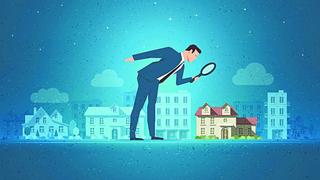Demand for real estate, especially housing, is expected to see an uptick only in the second half of FY21, as the economy gathers momentum, with a corresponding improvement in buyer sentiments, says Niranjan Hiranandani, National President of NAREDCO (National Real Estate Development Council), and co-founder and Managing Director of Hiranandani Group.
If a vaccine is developed for Covid-19, buyer sentiment improvements could take place a little earlier, say around the May-June period of 2021; otherwise it will be around November-December of 2021 when visible impact would be seen .
Affordable housing and the government’s thrust on it will ultimately lead to improved demand.
“The second half of 2021 is when we might see some uptick in real estate demand. As you know, the sector is directly linked to GDP. The faster the economy revives, the quicker will we see revival and improvement in buyer sentiments,” he told BusinessLine during an interview.
Real estate accounts for 15 per cent of the employment in the country, about 269 industries are linked directly or indirectly to it.
Issues like availability of labour ― most of the labourers have returned to their native places in reverse migration, during the pandemic ― have to be resolved. Labour has to be made available for construction activity to kick start.
“There are factors like return of migrant labourers, who will be needed to restart the construction activity or even manufacturing activity. Every segment of the economy is affected and it will take time for all the wheels to start rolling together. Non-availability of workers in the manufacturing sector could have a spin-off effect on sectors like real estate, say, in terms of availability of construction materials,” Hiranandani pointed out.
New trends
A post-Covid-19 world will also see a change in real estate requirements, from buyers.
For instance, one trends that is expected to emerge now would be demand for apartments with “more space” or “an additional room”.
Work from home is seen as part of the “new normal” now. Hence, people would like to have a “makeshift office” or an “office set-up arrangement” at their homes. This will also spur demand for apartments or complexes that ensure high-speed internet connectivity arrangements and such facilities.
Similarly, in the commercial space, offices will require more “areas” as social distancing norms come into force. There will, of course, be an increase in demand for such places over the next two-to-three years.
“Social distancing norms are here to stay. Naturally then, seating arrangements in offices will have to be spread out. It will require more space. This will be the trend for at least two to three years now,” he pointed out.
Stimulus package
Hiranandani agrees that the stimulus package announced by the Centre is “predominantly focused on sector reforms” and a “supply-side push”. But he maintains that demand side push “may come in at a later stage”, or at least when the wheels of the economy are set rolling.
“May be they have kept the demand as dry powder,” he maintained, adding that “for demand to pick up, the fear of the virus (Covid-19) and accompanying uncertainty around it have to go away first.”
(Investors refer to marketable securities that are highly liquid and considered cash-like as dry powder.)
The real estate sector, he said, is also expecting a more direct stimulus, much on the lines of the credit guarantee scheme extended to the MSMEs.
“Demand will come with availability of goods, and for that, supply-side management is required. Issues like supporting housing finance companies have been tackled in the package and as the economy comes on track over the next three months or so, benefits will flow,” Hiranandani said.








Comments
Comments have to be in English, and in full sentences. They cannot be abusive or personal. Please abide by our community guidelines for posting your comments.
We have migrated to a new commenting platform. If you are already a registered user of TheHindu Businessline and logged in, you may continue to engage with our articles. If you do not have an account please register and login to post comments. Users can access their older comments by logging into their accounts on Vuukle.